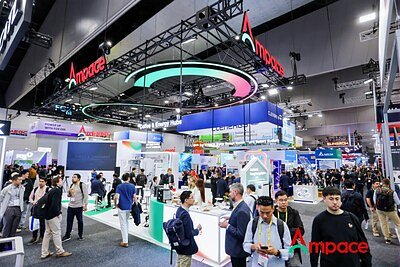
Ampace's Solid-State Batteries Aim to Revolutionize Australian Energy Storage
As Australia accelerates its renewable energy transition, Ampace is introducing a new generation of safer, longer-lasting batteries, promising to tackle grid stability & drive down energy costs. But will the tech live up to the hype?
Ampace's Solid-State Batteries Aim to Revolutionize Australian Energy Storage
Melbourne, Australia – October 29, 2025 – As Australia pushes forward with its ambitious renewable energy goals, the need for reliable and safe energy storage is becoming increasingly critical. Today, at All Energy Australia 2025, Ampace is unveiling its latest advancements in battery technology – mass-produced semi-solid-state lithium iron phosphate (LFP) batteries – designed to address key challenges in grid stability, lifespan, and safety. But can this innovative technology deliver on its promises in a rapidly evolving market?
Ampace’s core innovation lies in its shift to a semi-solid-state electrolyte, a move that aims to overcome the limitations of traditional liquid electrolyte-based lithium-ion batteries. These limitations include safety concerns related to thermal runaway and fire risk, as well as shorter lifespans. “The move to semi-solid state is a significant step,” explains one energy storage specialist, speaking anonymously. “Traditional liquid electrolytes are flammable and can lead to catastrophic failures. Semi-solid electrolytes offer a much safer operating window.”
Addressing Australia’s Unique Challenges
Australia's geographic scale and increasing reliance on intermittent renewable sources like solar and wind present unique energy storage challenges. The vast distances require robust and reliable grid infrastructure, while the variability of renewable energy demands efficient storage solutions to ensure a stable power supply. “Australia is at the forefront of renewable energy adoption, but that creates complexities,” explains a source within the Australian Energy Market Operator (AEMO). “We need solutions that can scale efficiently and maintain grid stability.”
Ampace’s new batteries, showcased at booth GG123 at the Melbourne Convention & Exhibition Centre, boast a 20% increase in energy density compared to conventional LFP batteries. This allows for more energy to be stored in a smaller space, a crucial advantage for both residential and commercial applications. The PU200 system, integrating these new cells, further delivers a 10C discharge performance, meaning it can release energy quickly to meet peak demand.
Longevity and Cost Savings: A Key Differentiator
Beyond performance improvements, Ampace is emphasizing the economic benefits of its technology. The Kunlun Series batteries are designed for an extended lifespan, offering up to 15,000 charge cycles – almost double the industry average – and a projected service life of up to 20 years. This longevity translates into significant cost savings for consumers and businesses.
“One of the biggest drivers of lifecycle costs in energy storage is battery replacement,” notes an industry analyst. “If you can extend the lifespan of a battery, you dramatically reduce the total cost of ownership.” Ampace claims that its technologies can reduce lifecycle electricity costs by up to 30%, a claim that, if verified, could make its batteries a compelling investment.
The UniC Series, an all-in-one solution for commercial and industrial use, incorporates a zero-cooling design, further reducing operational costs and complexity. The company is betting that this combination of longevity, efficiency, and reduced maintenance will appeal to a broad range of customers.
The Competitive Landscape & Verification Challenges
Ampace is entering a rapidly growing and increasingly competitive energy storage market. Global giants like CATL and BYD dominate the LFP battery landscape, while local players like Redflow and Sonnenschein are also vying for market share.
“The competition is fierce,” says an energy storage specialist. “Everyone is trying to push the boundaries of battery technology, improving energy density, safety, and lifespan.”
While Ampace’s claims are promising, independent verification is crucial. Currently, there is a lack of publicly available, third-party testing data to validate the company’s performance claims. “It’s important to see how these batteries perform in real-world conditions, under various operating temperatures and stress levels,” explains one industry analyst. “Independent testing will provide a more objective assessment of their capabilities.”
Looking Ahead: Scaling and Adoption
The key to Ampace’s success will be its ability to scale production and demonstrate the reliability of its technology. “Moving from a prototype to mass production is a significant challenge,” notes a source familiar with battery manufacturing. “Maintaining quality control and ensuring consistent performance are critical.”
The company is also focusing on expanding its presence in the Australian market and exploring potential partnerships with utilities and renewable energy developers. “Australia is a key market for us,” says a company spokesperson. “We believe our technology can play a significant role in enabling the country’s transition to a clean energy future.”
As Australia continues to embrace renewable energy, the demand for reliable and sustainable energy storage solutions will only increase. Ampace’s innovative semi-solid-state batteries offer a promising step forward, but independent verification and successful scaling will be crucial for realizing their full potential. The coming months will be critical in determining whether Ampace can truly revolutionize the Australian energy storage landscape.
